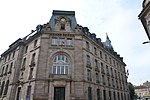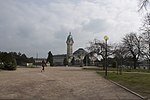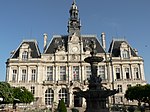Jardin botanique de l'Evêché

The Jardin botanique de l'Evêché (Botanical Garden of the Bishopric, 2 hectares), also known as the Jardin botanique de Limoges, is a botanical garden located behind the Cathedral and Musée de l'Evêché in Limoges, Haute-Vienne, Limousin, France. It is open daily without charge. The garden was first established in the 18th century, with today's botanical garden created 1956–1961 and renovated in 1976. It occupies several terraces overlooking the Vienne River with gardens organized into French parterres. Today the systematic garden contains more than 1,200 plants, organized into groupings including medicinal plants; industrial and dye plants; food and condiments; fodder; and aromatic plants.
Excerpt from the Wikipedia article Jardin botanique de l'Evêché (License: CC BY-SA 3.0, Authors, Images).Jardin botanique de l'Evêché
Place Saint-Étienne, Limoges Saint-Lazare
Geographical coordinates (GPS) Address Nearby Places Show on map
Geographical coordinates (GPS)
| Latitude | Longitude |
|---|---|
| N 45.8285 ° | E 1.267 ° |
Address
Place Saint-Étienne
87000 Limoges, Saint-Lazare
Nouvelle-Aquitaine, France
Open on Google Maps









